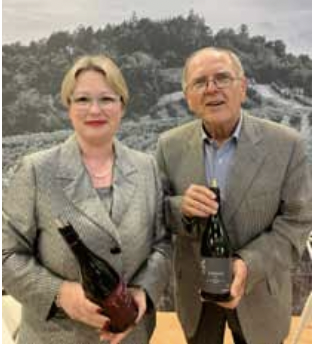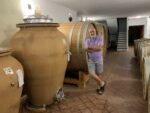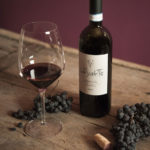Vinchio Vaglio
The artisans of Barbera !
The story of Vinchio Vaglio is a love story where the inhabitants of two villages (Vinchio and Vaglio) transformed a difficult and poor, inarable land with steep slopes into a picturesque wine region. This area with its rolling hills and overhanging vineyards at the edge of the woods has been tended with a dramatic effort, where every single drop of the local Barbera wine equates to thousands of drops of farmers’ sweat. Vinchio Vaglio is a cooperative that unites 192 growers. Each associate has at least one avgnot (small vineyard) of their own, which, is their passion. The rules of the cooperative stipulate that the President and the Vice-President must come from Vinchio and Vaglio Serra, respectively. This is because of an old rivalry between the two villages, which only ended thanks to the hard work of the cooperative and the willingness to promote the local area. Today the old rivalries are forgotten and all the farmers work together to produce the world-famous Barbera. They make whites and sparkling wines plus dessert wines like Moscato and Brachetto
Why have you decided to make wine?
Vinchio Vaglio has always produced wine only and has never been involved in other agricultural or industrial activities. The two communes (Vinchio and Vaglio) are exclusively dedicated to wine. 98% of the vineyards belong to the Vinchio Vaglio cooperative members.
What wine means you in 4-5 words?
Even in fewer words – passion and emotion!
 What are the signature features of your wines that allow you to recognize them in a blind tasting?
What are the signature features of your wines that allow you to recognize them in a blind tasting?
Barbera of Vinchio Vaglio always shows its unique personality as it is a blend of grapes coming from sandy soils which transmit elegance and finesse to our wines, from white soils that give longevity and structure and also red calcareous soils that contribute to the colour. This mix gives wines with great structure and longevity which are accessible almost right away after the release but age beautifully as well. It is like cement that only becomes strong when it is mixed with water. So, the signature of our wines is elegance but also accessibility when they are young.
What are your expectations from the new appellation of Nizza?
First of all, for Nizza now we have 18 communes and around 60 producers which produce 100% Barbera on the terroir which gives the variety the possibility to express itself to the maximum and which is then transmitted to the quality of the wine. The idea is of course to give importance to our land.
What are your future projects?
We would like to continue with quality wine production and maintain our landscape, paying our members well as it is the main goal of the cooperative, so the growers can continue their work. The challenge is to keep this beautiful landscape and to incent consumers not only to drink our wines at their place but to come and see the terroir and understand what is behind the wines – the men, the effort that it takes to cultivate these hilly vineyards, almost exclusively by hand. The details make the difference. Our philosophy is the tradition in the vineyards and innovation in the winery – temperature control, stabilization, and protective winemaking.
Do you have an anecdote about the property?
When I was a kid, my father was making wines at home, we own a winery founded in 1959. People were often coming to buy wines from us. Once a group arrived. They left their van behind the turn, so my father did not see it, and they came by foot to the winery. They wanted to buy our wines immediately but they pretended to come for negotiations. My father told me that if he knew that they came with a truck, the talk would have been completely different. But they were smart and cunning! And this story happened in January and they were willing to buy the wines of the current vintage. So, this proves again that our wines are ready to drink very early. According to Barbera d’Asti legislation, the wines cannot be released before March 1st following the harvest but our wines are already good to drink in January-February because they are so balanced that the malolactic conversion arrives spontaneously. I think this is due to the altitude of the vineyards.




